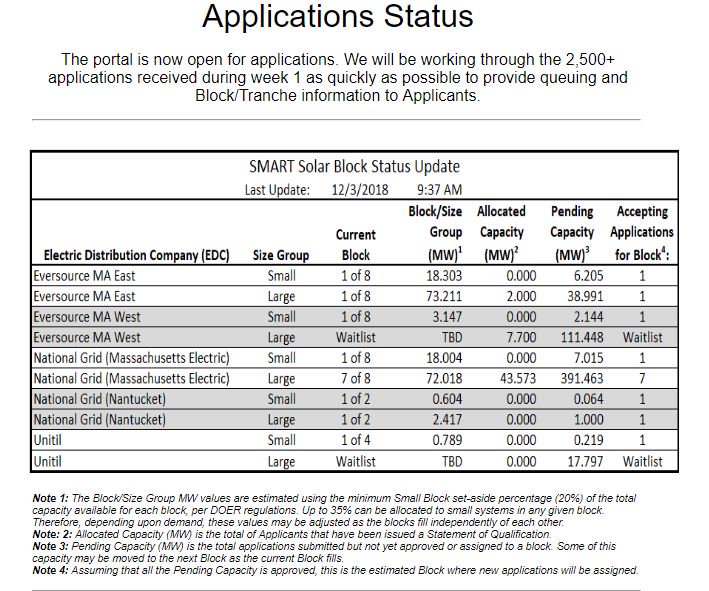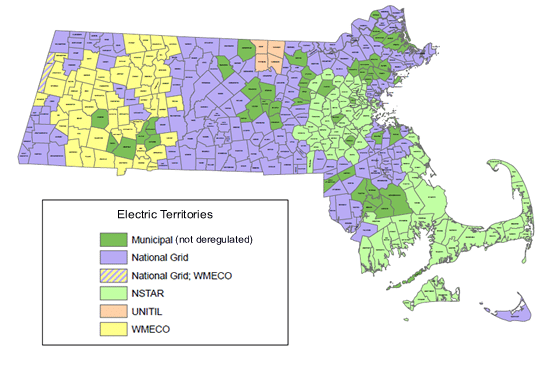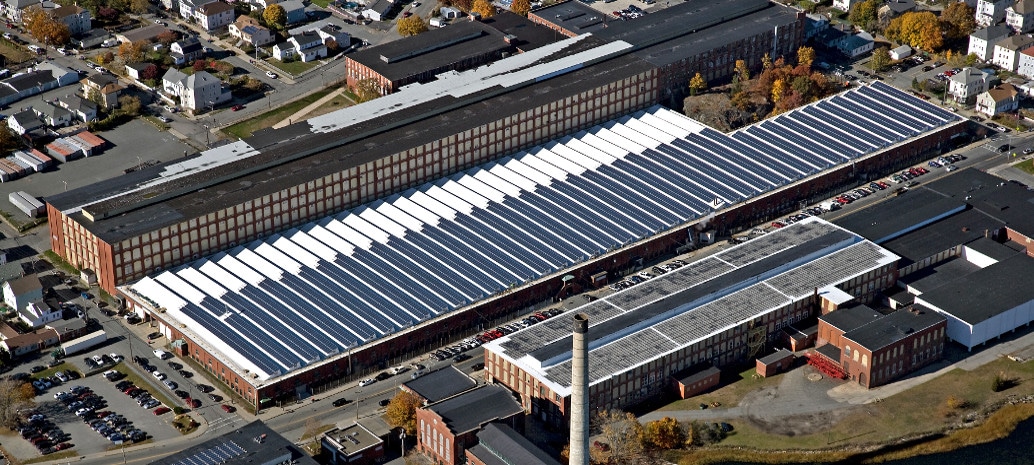Beginnings are difficult times. And given the delayed roll-out and pent-up demand for Massachusetts’ SMART program, it was long projected that some portions of the program would rapidly fill up as soon as it became available.
These expectations appear to be largely correct, and the program reports that developers and installers submitted applications for more than 2,500 projects in the first week after SMART started taking applications on November 26. Additionally a December 3 update to the program shows that large (25 kW to 5 MW) projects in service area of Unitil and the western portion of Eversource’s service area (WMECO) have already been placed on a waitlist, with large projects in National Grid’s service area on the seventh of eight available blocks.

The Eversource MA West/WMECO and Unitil blocks were small to begin with; earlier status updates showed only 3.1 MW in the first of eight “large” blocks in of Eversource MA West and 3.2 MW in Unitil’s first of four blocks. The flood of 25 kW or larger projects overwhelmed this, with 18 MW pending in Unitil’s service area and 8 MW allocated and 111 MW pending in Eversource MA West.
National Grid’s much larger service area is seeing the biggest capacity of proposed projects, with 44 MW of projects larger than 25 kW approved and another 391 MW pending, and the program on the seventh of eight blocks. However for the other two service areas there is less demand, with Eversource MA East (NSTAR) still on the first block for large projects, and only 1 MW of larger projects in the queue for National Grid in Nantucket.

There is also the matter that these larger projects will mostly not qualify for net metering, as the program is already full in the same service areas that have seen a flood of applications. As such, these projects will have to participate in SMART’s Alternative On-Bill Credit mechanism.
However, there is plenty of room for projects smaller than 25 kW, as the program reports that every utility service area still has capacity available in the first block. Additionally, many of these projects will be able to qualify for net metering, as projects smaller than 10 kW on a single-phase circuit or 25 kW on a three-phase circuit are not subject to net metering program caps.
This content is protected by copyright and may not be reused. If you want to cooperate with us and would like to reuse some of our content, please contact: editors@pv-magazine.com.









By submitting this form you agree to pv magazine using your data for the purposes of publishing your comment.
Your personal data will only be disclosed or otherwise transmitted to third parties for the purposes of spam filtering or if this is necessary for technical maintenance of the website. Any other transfer to third parties will not take place unless this is justified on the basis of applicable data protection regulations or if pv magazine is legally obliged to do so.
You may revoke this consent at any time with effect for the future, in which case your personal data will be deleted immediately. Otherwise, your data will be deleted if pv magazine has processed your request or the purpose of data storage is fulfilled.
Further information on data privacy can be found in our Data Protection Policy.